Where are Italy's active volcanoes?

The latest eruption of Stromboli was a deadly reminder that Italy is one of the few countries in Europe with active volcanoes. Here's where you'll find them.
Italy spans two tectonic plates: the Eurasian Plate and the African Plate, which meet between Sicily and the mainland.
At the boundary between the two, one is forced under the other and sinks into the Earth's hot mantle, the water within it being squeezed out at high pressure and helping to form magma deep underground that forces its way to the surface and bursts through in the form of a volcano.
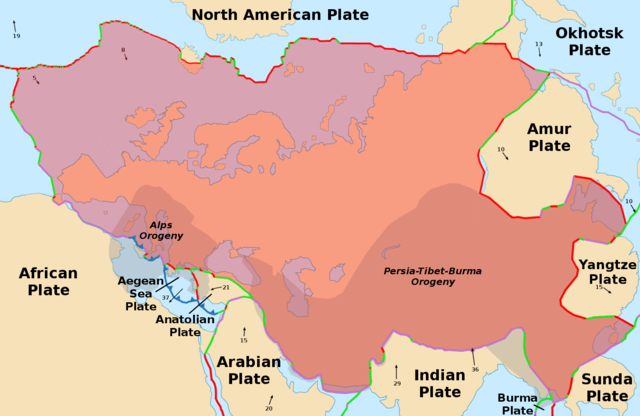
Map: Alataristarion - CC BY-SA 4.0, Wikipedia
Both volcanoes and earthquakes are common around such boundaries – in this case, south-west Italy.
READ ALSO: Which areas of Italy have the highest risk of earthquakes?
The area has three main hotspots: a chain of volcanoes in and around the Bay of Naples in Campania; another cluster in north-east Sicily; and a third near Pantelleria, the island between Sicily and Tunisia.
While most of its volcanoes have been dormant for at least 100 years, three remain active: Stromboli on its own island off northern Sicily, Etna in the north-east of Sicily, and Vesuvius in the Bay of Naples.
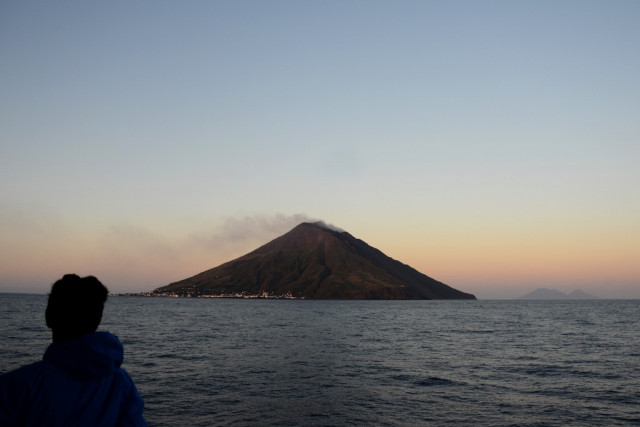
The island volcano of Stromboli. Photo: Gabriel Bouys/AFP
Alone on its sparsely populated island, Stromboli is the smallest but one of the most active. Before this week's eruption, it last erupted in 2014, 2013, 2007, 2003 and 2002. In fact the volcano has been erupting almost continuously for most of the past 2,000 years, though usually much less dramatically.
Geologists have coined a term, strombolian, to describe the distinctive type of eruption with which the volcano is associated: series of mild but spectacular bursts that send molten rock and ash shooting into the air as high as hundreds of metres.
IN PHOTOS: Massive eruption on Stromboli, Italy's volcanic hotspot
This week's explosion was the first deadly eruption in several decades, after one hiker was killed. The largest recent eruption before now, in 2002, put several people in hospital and created a damaging tsunami, but did not result in any deaths.
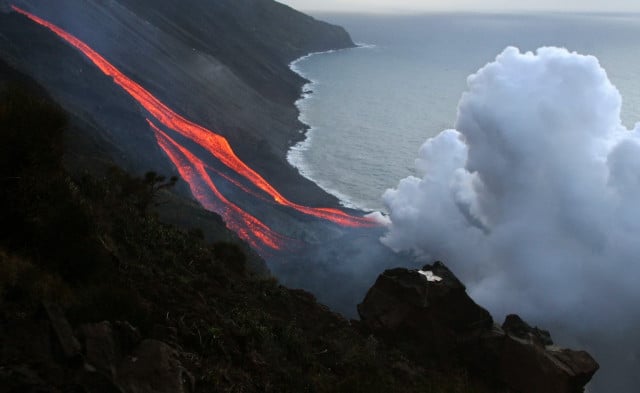
Stromboli erupting in 2007. Photo: Mario Laporta/AFP
Etna is also in near continuous eruption, and has a far deadlier record: at least 77 deaths can be attributed to its eruptions over the centuries for certain, according to research, and other records claim the total is in the thousands.
READ ALSO: How volcanic crystals could make it easier to predict eruptions at Etna
The toll is partly due to Etna's size – at more than 3,300 metres, it's more than twice the height of Italy's second largest volcano, Vesuvius – and partly due to its proximity to populated areas. For centuries people have been drawn to the mountain for the rich volcanic soil on its slopes, which supports abundant vines, crops and fruit trees.
The deadly giant is also known as Mongibello, which supposedly comes from the Italian word "monte" (mountain) and the Arabic "jabal" (also mountain) – making its nickname literally "mountain mountain".
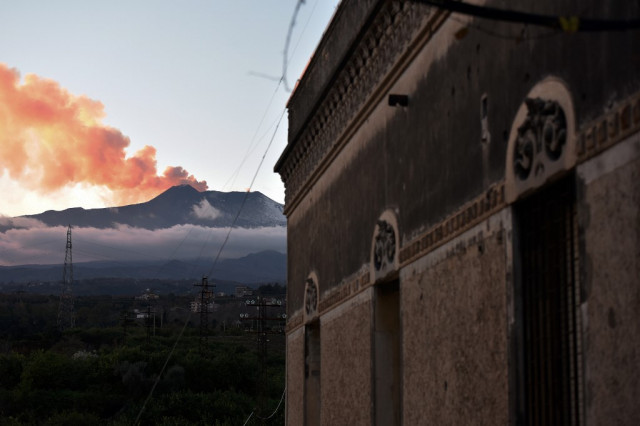
Etna towers over Catania. Photo: Giovanni Isolino/AFP
Etna's most destructive eruption on record took place in 1669, when lava swept through villages on Etna's slopes and all the way to Catania on the coast. Defensive walls protected the city and sent molten rock plunging into the harbour.
READ ALSO: Mount Etna is sliding towards the sea and now we know why
Major eruptions have taken place roughly twice a decade since the 1970s, often accompanied by earthquakes. The last time anyone is known to have been killed by Etna is 1987, when a woman and her 7-year-old son were caught in a sudden, brief explosion while walking near the summit with their tour group.
More frequently, Etna's eruptions make themselves felt by forcing authorities to close Catania airport and its airspace because of the vast clouds of ash.
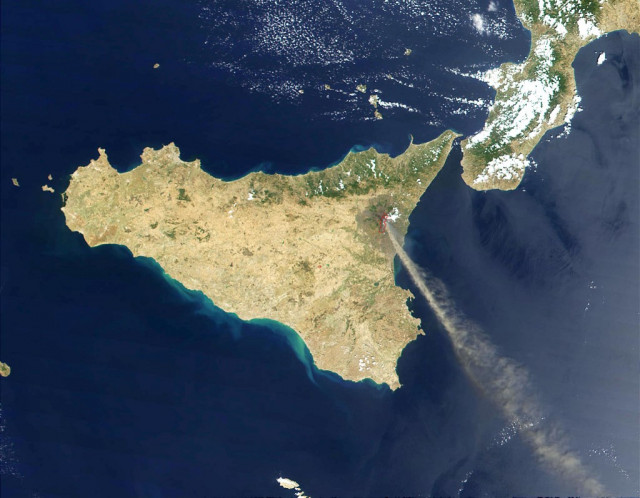
Etna erupting in 2001, as seen from space. Photo: NASA/AFP
If Etna and Stromboli are constantly rumbling, Vesuvius has maintained an ominous silence since 1944, when its last major eruption destroyed several villages and damaged a nearby US air base.
The only volcano on Italy's mainland, its eruptions are always dramatic: most famously the eruption of 79 AD that wiped out the population of Pompeii, but also a much larger one during the Bronze Age that prompted a mass exodus, not to mention an eruption in 1631 that buried entire villages in lava and killed some 3,000 people.
VIDEO: Mount Etna is erupting and it looks spectacular
In 1906, Vesuvius forced the cancellation of an Italian Olympics: the volcano erupted two years before Rome was due to host the Summer Games, forcing the government to put the funds into rebuilding Naples and organizers to look for an alternative venue (the Games eventually took place in London).
Watch a 1944 newsreel about that year's eruption.
If Vesuvius erupts again, as experts predict it will, the devastation could be huge: the longer the period of inactivity, the more explosive the eruption tends to be. But the biggest risk factor is how close Vesuvius lies to Naples, Italy's third biggest city.
The Italian authorities monitor the volcano's activity closely and have drawn up plans to evacuate as many as 700,000 people if the signs point to an eruption. Over time, they hope to draw residents out of the high-risk "red zone" surrounding Vesuvius in order to reduce the danger.
READ ALSO:
-
Italy puzzles how to save 700,000 people from wrath of Vesuvius
-
Was Pompeii destroyed two months later than we thought?
-
Super-volcano under Naples shows signs of reawakening
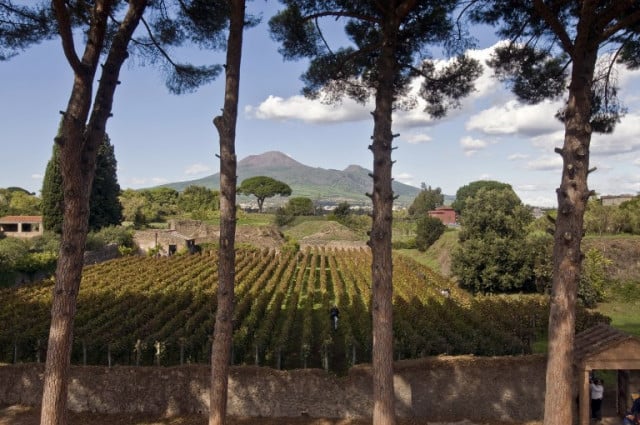
Vesuvius seen from Pompeii. Photo: Mario Laporta/AFP
As well as its three active volcanoes, Italy is also home to several others that lie dormant (for now).
They include Ischia, the island off Naples that last saw an eruption in 1302, Larderello in Tuscany, dormant since 1282 and now a major source of geothermal power, and a string of volcanoes near Rome that gave the region its beautiful volcanic lakes: Albano, Bracciano and Nemi.
Also of note is Empedocles, an underwater volcano off Sicily that created a new island in 1831 and started a scramble as European powers rushed to claim it. The British got there first and named it Graham Island, only for France and Sicily to stake rival claims.
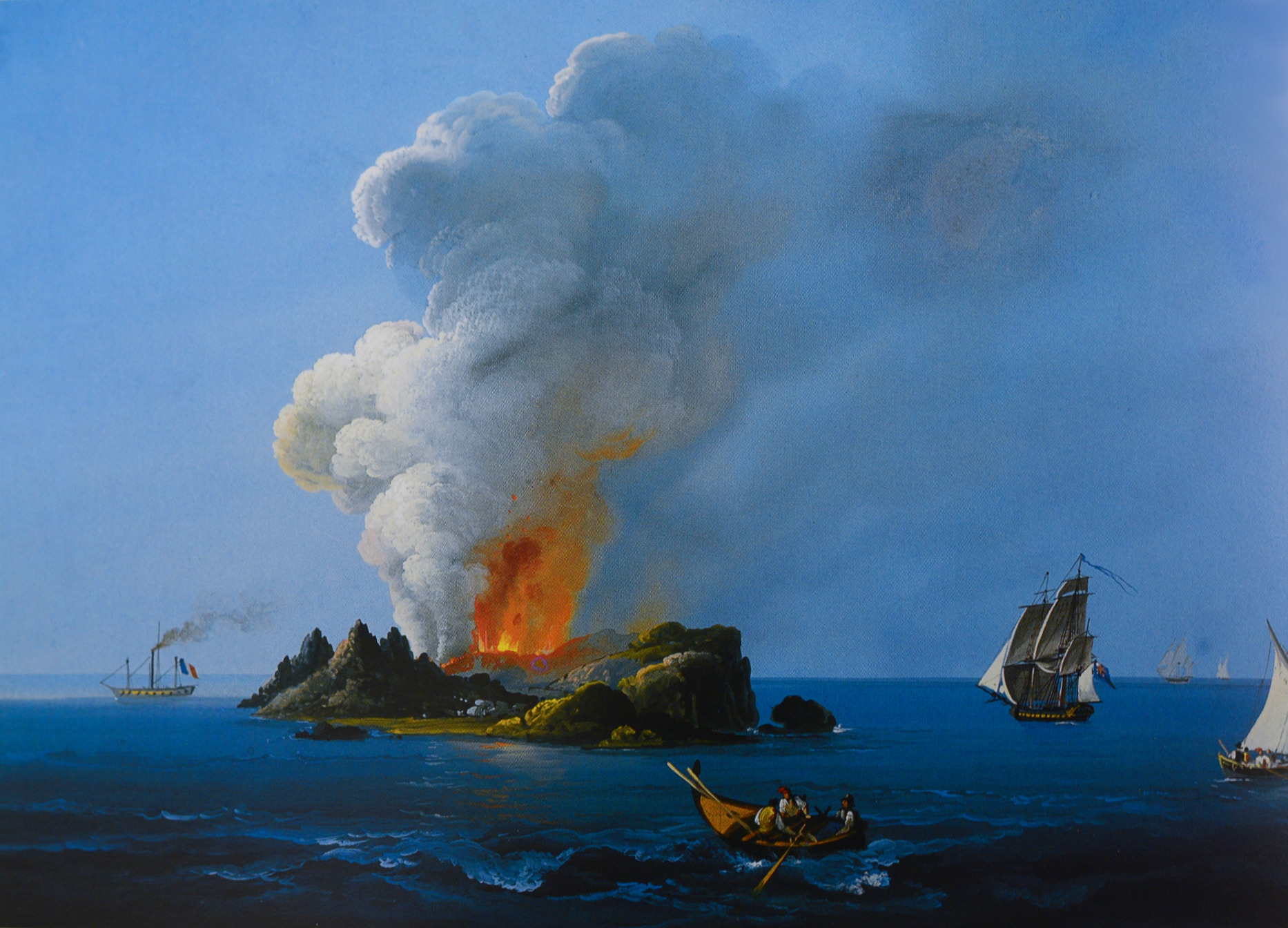
Isola Ferdinandea, as it is known to the Sicilians, pictured in 1831 by Camillo Di Vito.
The conflict was resolved when the island sank back beneath the waters later the same year, never to surface again. It has since risen among signs of fresh volcanic activity and currently lies around 8 metres below sea level.
Comments
See Also
Italy spans two tectonic plates: the Eurasian Plate and the African Plate, which meet between Sicily and the mainland.
At the boundary between the two, one is forced under the other and sinks into the Earth's hot mantle, the water within it being squeezed out at high pressure and helping to form magma deep underground that forces its way to the surface and bursts through in the form of a volcano.

Map: Alataristarion - CC BY-SA 4.0, Wikipedia
Both volcanoes and earthquakes are common around such boundaries – in this case, south-west Italy.
READ ALSO: Which areas of Italy have the highest risk of earthquakes?
The area has three main hotspots: a chain of volcanoes in and around the Bay of Naples in Campania; another cluster in north-east Sicily; and a third near Pantelleria, the island between Sicily and Tunisia.
While most of its volcanoes have been dormant for at least 100 years, three remain active: Stromboli on its own island off northern Sicily, Etna in the north-east of Sicily, and Vesuvius in the Bay of Naples.

The island volcano of Stromboli. Photo: Gabriel Bouys/AFP
Alone on its sparsely populated island, Stromboli is the smallest but one of the most active. Before this week's eruption, it last erupted in 2014, 2013, 2007, 2003 and 2002. In fact the volcano has been erupting almost continuously for most of the past 2,000 years, though usually much less dramatically.
Geologists have coined a term, strombolian, to describe the distinctive type of eruption with which the volcano is associated: series of mild but spectacular bursts that send molten rock and ash shooting into the air as high as hundreds of metres.
IN PHOTOS: Massive eruption on Stromboli, Italy's volcanic hotspot
This week's explosion was the first deadly eruption in several decades, after one hiker was killed. The largest recent eruption before now, in 2002, put several people in hospital and created a damaging tsunami, but did not result in any deaths.

Stromboli erupting in 2007. Photo: Mario Laporta/AFP
Etna is also in near continuous eruption, and has a far deadlier record: at least 77 deaths can be attributed to its eruptions over the centuries for certain, according to research, and other records claim the total is in the thousands.
READ ALSO: How volcanic crystals could make it easier to predict eruptions at Etna
The toll is partly due to Etna's size – at more than 3,300 metres, it's more than twice the height of Italy's second largest volcano, Vesuvius – and partly due to its proximity to populated areas. For centuries people have been drawn to the mountain for the rich volcanic soil on its slopes, which supports abundant vines, crops and fruit trees.
The deadly giant is also known as Mongibello, which supposedly comes from the Italian word "monte" (mountain) and the Arabic "jabal" (also mountain) – making its nickname literally "mountain mountain".

Etna towers over Catania. Photo: Giovanni Isolino/AFP
Etna's most destructive eruption on record took place in 1669, when lava swept through villages on Etna's slopes and all the way to Catania on the coast. Defensive walls protected the city and sent molten rock plunging into the harbour.
READ ALSO: Mount Etna is sliding towards the sea and now we know why
Major eruptions have taken place roughly twice a decade since the 1970s, often accompanied by earthquakes. The last time anyone is known to have been killed by Etna is 1987, when a woman and her 7-year-old son were caught in a sudden, brief explosion while walking near the summit with their tour group.
More frequently, Etna's eruptions make themselves felt by forcing authorities to close Catania airport and its airspace because of the vast clouds of ash.

Etna erupting in 2001, as seen from space. Photo: NASA/AFP
If Etna and Stromboli are constantly rumbling, Vesuvius has maintained an ominous silence since 1944, when its last major eruption destroyed several villages and damaged a nearby US air base.
The only volcano on Italy's mainland, its eruptions are always dramatic: most famously the eruption of 79 AD that wiped out the population of Pompeii, but also a much larger one during the Bronze Age that prompted a mass exodus, not to mention an eruption in 1631 that buried entire villages in lava and killed some 3,000 people.
VIDEO: Mount Etna is erupting and it looks spectacular
In 1906, Vesuvius forced the cancellation of an Italian Olympics: the volcano erupted two years before Rome was due to host the Summer Games, forcing the government to put the funds into rebuilding Naples and organizers to look for an alternative venue (the Games eventually took place in London).
Watch a 1944 newsreel about that year's eruption.
If Vesuvius erupts again, as experts predict it will, the devastation could be huge: the longer the period of inactivity, the more explosive the eruption tends to be. But the biggest risk factor is how close Vesuvius lies to Naples, Italy's third biggest city.
The Italian authorities monitor the volcano's activity closely and have drawn up plans to evacuate as many as 700,000 people if the signs point to an eruption. Over time, they hope to draw residents out of the high-risk "red zone" surrounding Vesuvius in order to reduce the danger.
READ ALSO:
- Italy puzzles how to save 700,000 people from wrath of Vesuvius
- Was Pompeii destroyed two months later than we thought?
- Super-volcano under Naples shows signs of reawakening

Vesuvius seen from Pompeii. Photo: Mario Laporta/AFP
As well as its three active volcanoes, Italy is also home to several others that lie dormant (for now).
They include Ischia, the island off Naples that last saw an eruption in 1302, Larderello in Tuscany, dormant since 1282 and now a major source of geothermal power, and a string of volcanoes near Rome that gave the region its beautiful volcanic lakes: Albano, Bracciano and Nemi.
Also of note is Empedocles, an underwater volcano off Sicily that created a new island in 1831 and started a scramble as European powers rushed to claim it. The British got there first and named it Graham Island, only for France and Sicily to stake rival claims.

Isola Ferdinandea, as it is known to the Sicilians, pictured in 1831 by Camillo Di Vito.
The conflict was resolved when the island sank back beneath the waters later the same year, never to surface again. It has since risen among signs of fresh volcanic activity and currently lies around 8 metres below sea level.
Join the conversation in our comments section below. Share your own views and experience and if you have a question or suggestion for our journalists then email us at [email protected].
Please keep comments civil, constructive and on topic – and make sure to read our terms of use before getting involved.
Please log in here to leave a comment.